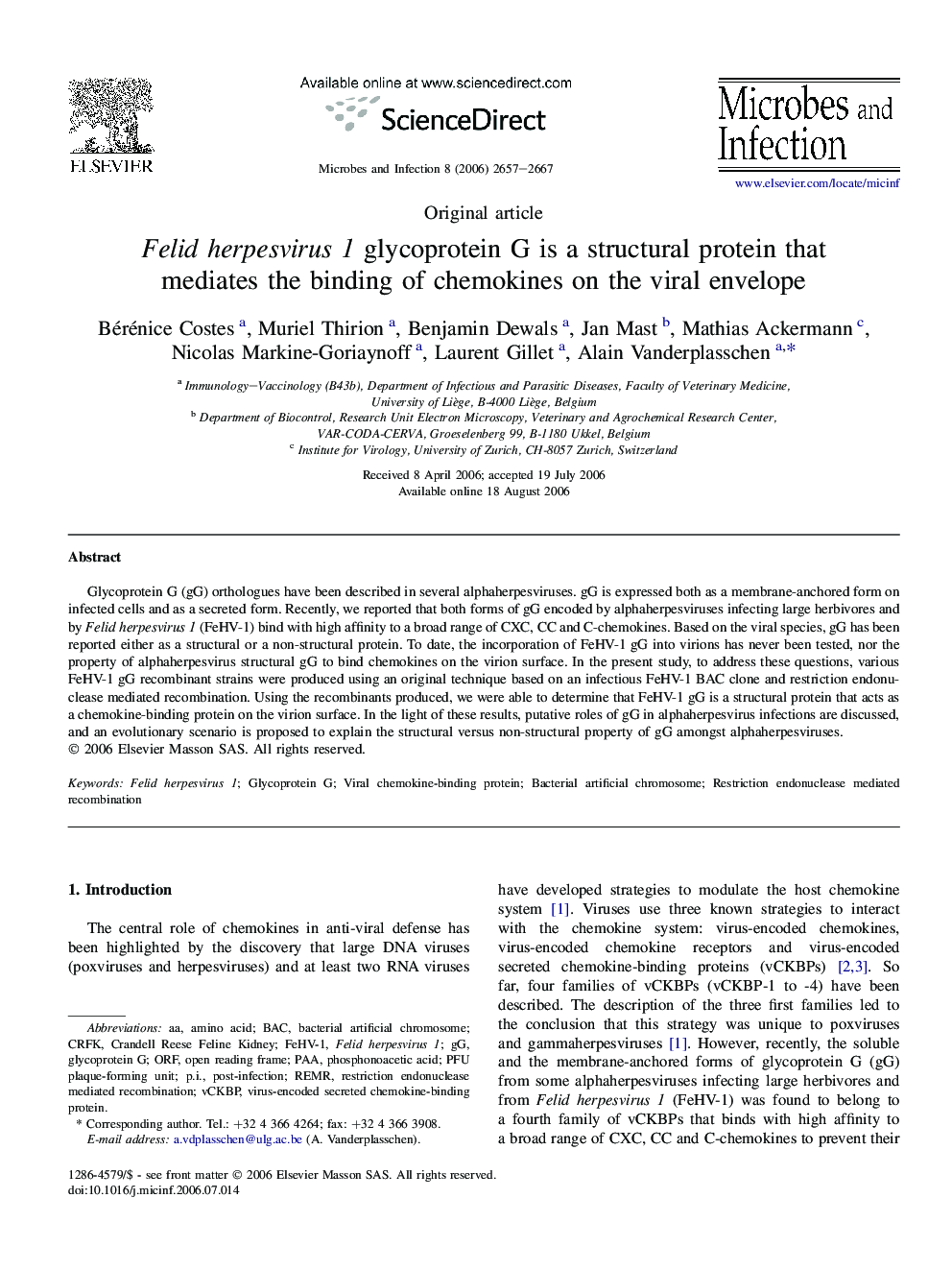| Article ID | Journal | Published Year | Pages | File Type |
|---|---|---|---|---|
| 3415518 | Microbes and Infection | 2006 | 11 Pages |
Glycoprotein G (gG) orthologues have been described in several alphaherpesviruses. gG is expressed both as a membrane-anchored form on infected cells and as a secreted form. Recently, we reported that both forms of gG encoded by alphaherpesviruses infecting large herbivores and by Felid herpesvirus 1 (FeHV-1) bind with high affinity to a broad range of CXC, CC and C-chemokines. Based on the viral species, gG has been reported either as a structural or a non-structural protein. To date, the incorporation of FeHV-1 gG into virions has never been tested, nor the property of alphaherpesvirus structural gG to bind chemokines on the virion surface. In the present study, to address these questions, various FeHV-1 gG recombinant strains were produced using an original technique based on an infectious FeHV-1 BAC clone and restriction endonuclease mediated recombination. Using the recombinants produced, we were able to determine that FeHV-1 gG is a structural protein that acts as a chemokine-binding protein on the virion surface. In the light of these results, putative roles of gG in alphaherpesvirus infections are discussed, and an evolutionary scenario is proposed to explain the structural versus non-structural property of gG amongst alphaherpesviruses.
